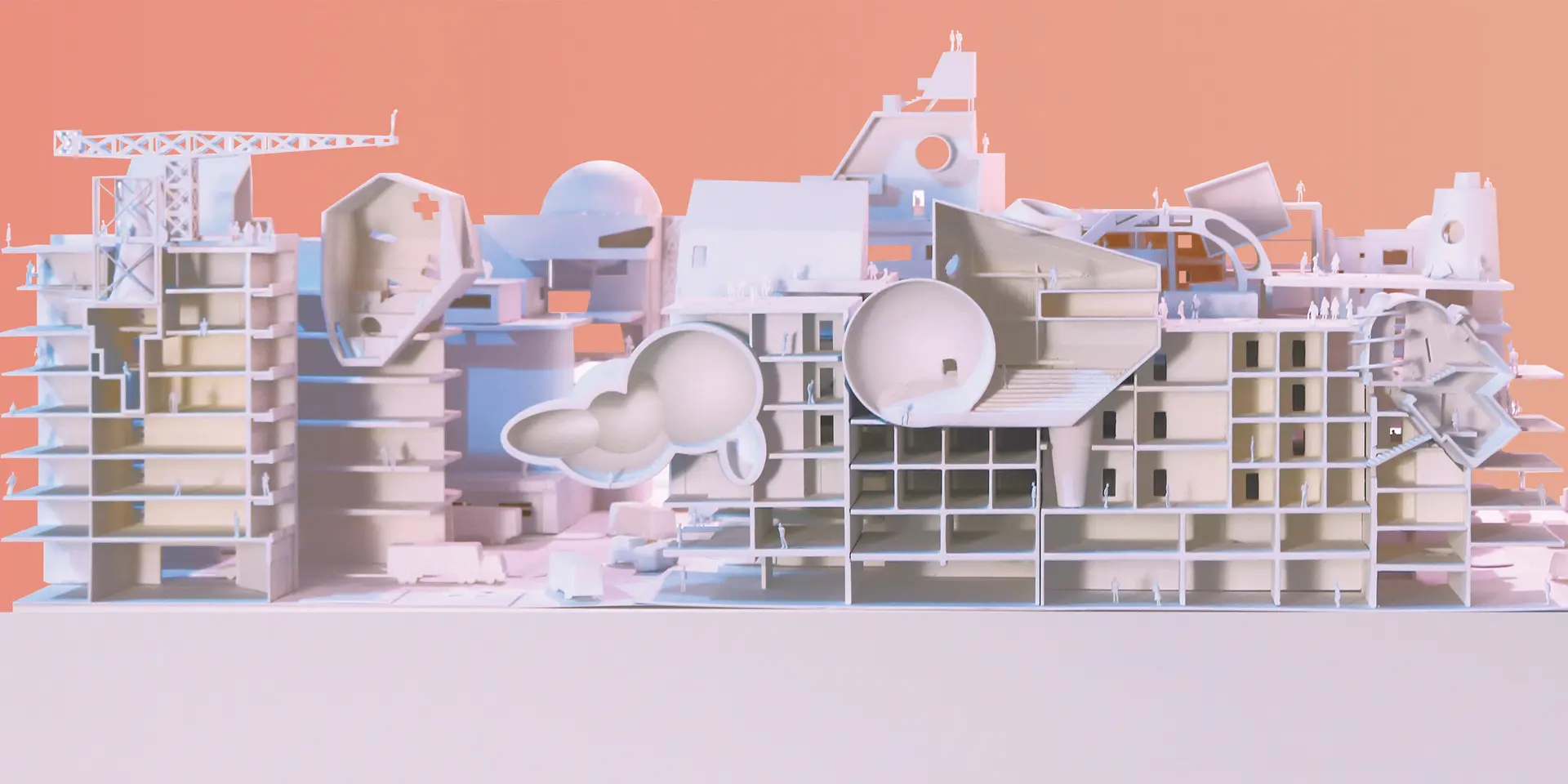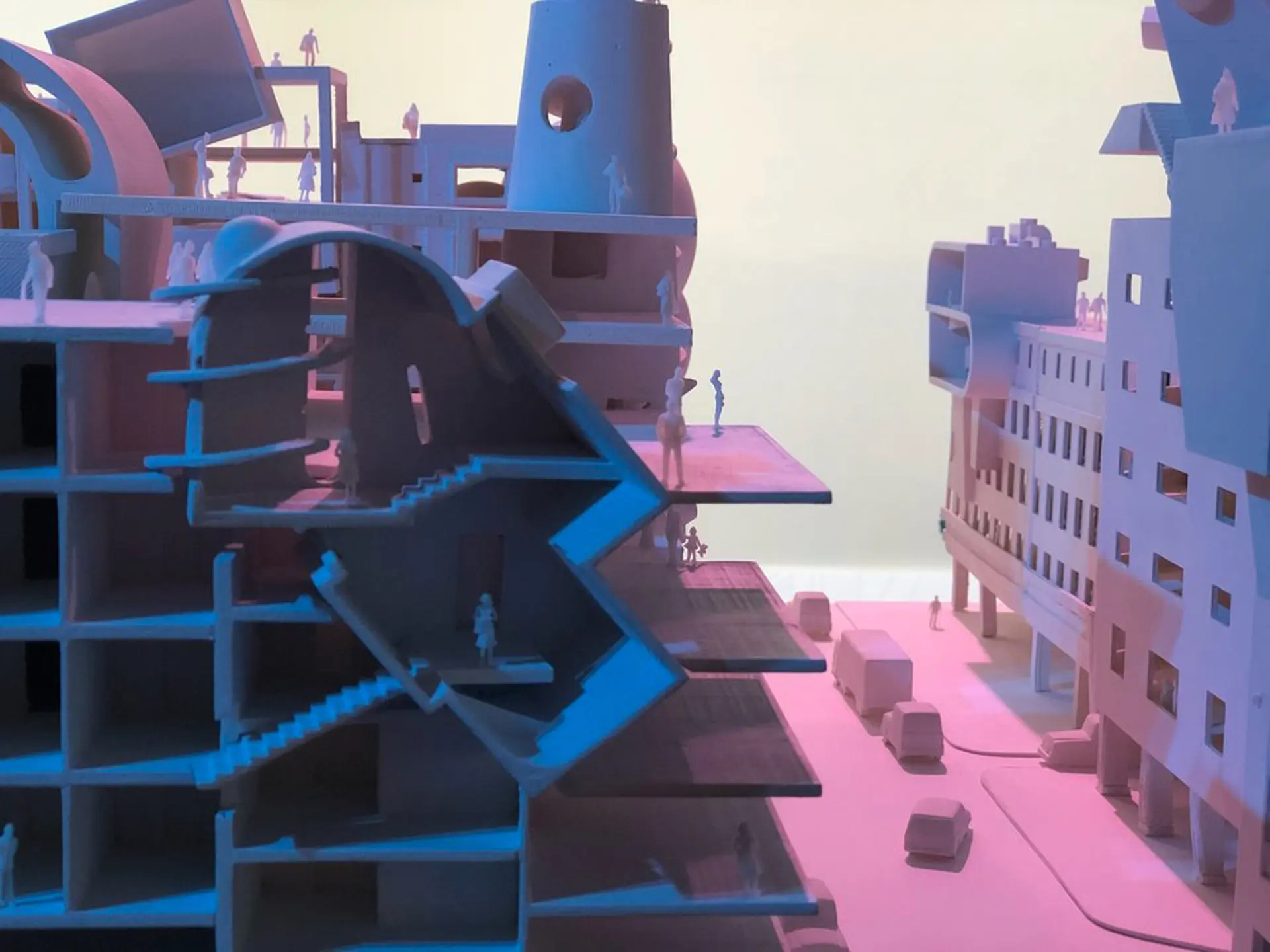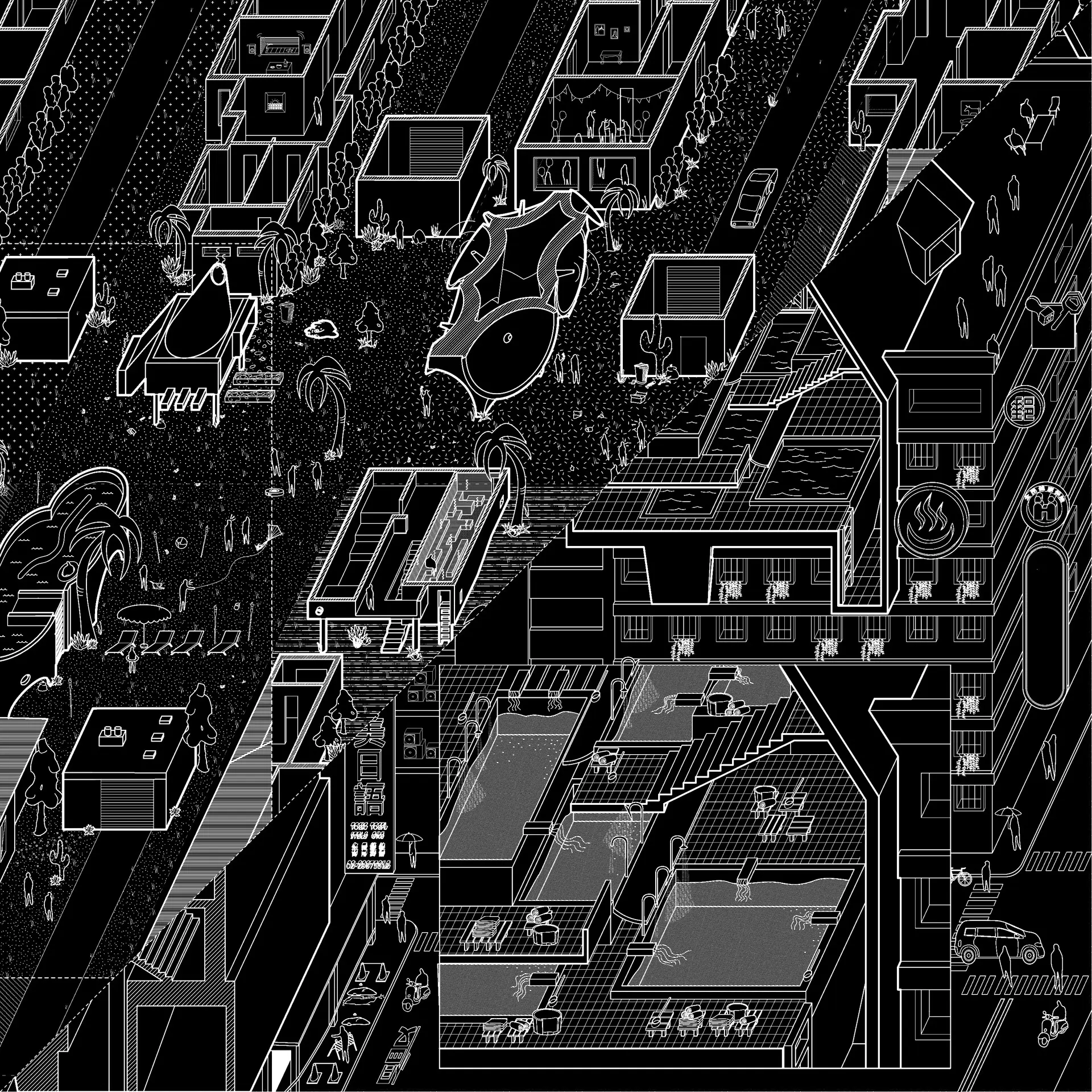
Rooftop Urbanism is an unbuilt proposal that calls for adding buildings onto buildings. This project was exhibited at the Taiwan Academy in Los Angeles.
Taipei experiences shortages of residential and commercial supplies to meet the growing demands of rent and purchase. This deficit has resulted in a high cost of living, creating a sense of discomfort caused by the unaffordability of housing. As a result, many Taipei citizens generated a natural response to this problem: add more buildings to the properties they already own, and increase the quantity of supply to meet the demand. In other words, build a building on top of their existing building.
Although this economic solution sounds simple enough, there are varying degrees of bureaucratic gymnastics in both cities that one must reckon with. The Weijian (違建 literally, “illegal construction”) is a practice in which many property owners resolve the housing or commercial shortage by building buildings on top of buildings. The complex and confusing legal process causes citizens to either misunderstand or outright omit the permitting process.
The illegal construction has been a subject of debate in Taipei: it is uncomfortable, cheap, dangerous, and unsightly. In this proposal, we are making a counter-argument about this condition: what if the added buildings on buildings becomes an aesthetic and cultural feature of Taiwan? What if we embrace the fact that buildings are built on top of buildings, and we simply make these additions more interesting, both visually and programmatically? Our proposal interrupts the typical floor plates with shapes that redefine the functions of an existing block in East Taipei.



